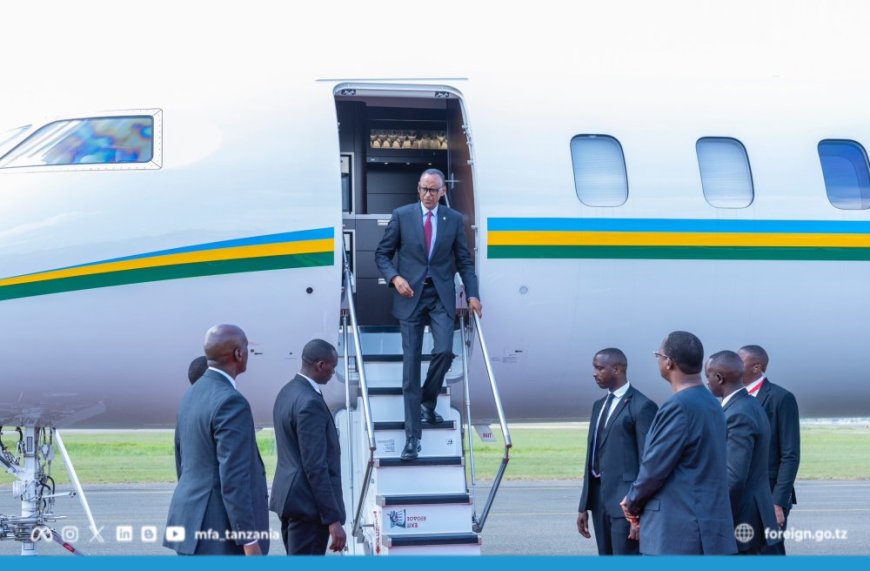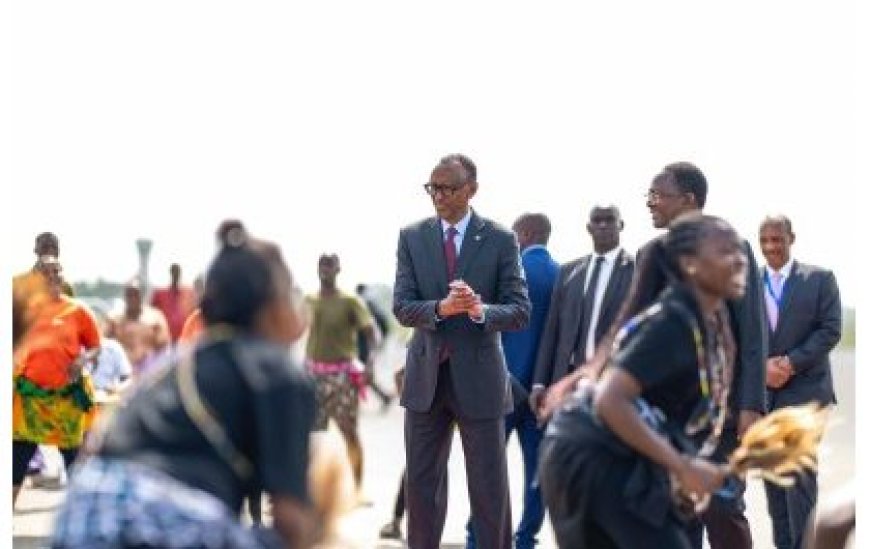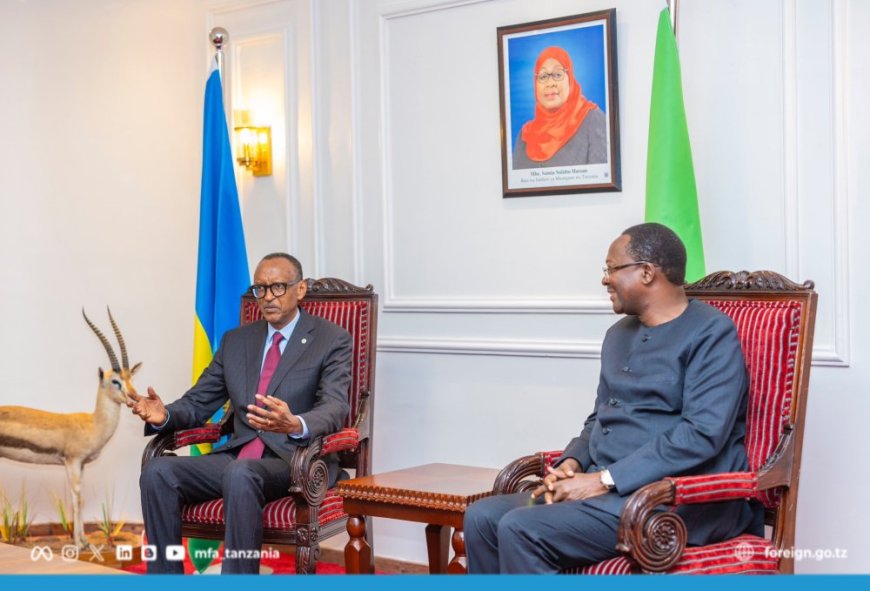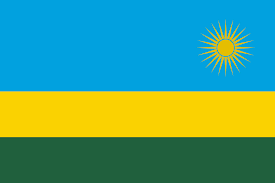East African Leaders Convene in Dar es Salaam for EAC-SADC Summit on DRC Conflict: Kagame Joins Regional Heads of State.
President Paul Kagame joins East African leaders in Dar es Salaam for a joint EAC-SADC summit on the DRC crisis. Key discussions focus on M23 rebels, Goma's capture, and sustainable peace solutions.

Dar es Salaam, Tanzania – On Thursday, President Paul Kagame of Rwanda arrived in Dar es Salaam, joining fellow Heads of State from the East African Community (EAC) and the Southern African Development Community (SADC) for a crucial joint summit aimed at tackling the rising security crisis in the eastern Democratic Republic of Congo (DRC). This summit, organized by Tanzanian President Samia Suluhu Hassan, focuses on finding sustainable solutions to the ongoing conflict between the DRC’s armed forces (FARDC) and the M23 rebel group.

The meeting occurs at a pivotal moment, following the recent takeover of Goma, the capital of North Kivu province, by M23 rebels. This group’s progress has renewed demands for an inclusive political dialogue as a means to achieve lasting peace in the area. The summit highlights the pressing need for regional collaboration to address one of Africa’s longest-standing conflicts.
Who’s in Attendance?
The summit has brought together some of Africa’s most prominent leaders, reflecting the gravity of the situation in eastern DRC. Key attendees include:
- Tanzanian President Samia Suluhu Hassan – Host of the summit.
- Kenyan President William Ruto – Current Chairperson of the EAC.
- Zimbabwean President Emmerson Mnangagwa – Current Chairperson of SADC.
- Ugandan President Yoweri Museveni – A key regional mediator in the DRC conflict.
- Zambian President Hakainde Hichilema – Representing SADC’s commitment to regional stability.
- Somali President Hassan Sheikh Mohamud – Highlighting the broader African interest in resolving the crisis.
South African President Cyril Ramaphosa, whose nation has played an active role in SADC’s military effort in the DRC, is anticipated to attend the summit later. Prime Minister Gervais Ndirakobuca represents Burundi’s President Evariste Ndayishimiye, while DRC President Félix Tshisekedi is taking part virtually.

The Context: M23’s Advance and Calls for Dialogue
The M23 rebel group, which resurfaced in late 2021 after almost ten years of inactivity, has recently ramped up its activities in eastern DRC. The takeover of Goma, a crucial city in North Kivu, has created considerable alarm throughout the region, highlighting the precariousness of the security environment. The group has consistently urged negotiations with the DRC government, pointing to issues of political exclusion and the marginalization of Congolese Tutsi communities.
Prior to the summit, both the EAC and SADC emphasized the importance of inclusive political dialogue as essential for achieving a lasting resolution to the conflict. Conversely, the DRC government frequently blames Rwanda for backing the M23, a charge that Rwanda strongly refutes. This ongoing tension has hindered regional mediation efforts in the crisis.
What’s at Stake?
The conflict in eastern DRC impacts regional stability significantly. This resource-rich area has faced decades of violence from various armed groups, such as the FDLR (Forces Démocratiques de Libération du Rwanda), Wazalendo militias, and currently the M23. The humanitarian consequences are immense, resulting in millions of displaced individuals and innumerable lives lost.
The summit aims to:
- Foster Regional Unity: The summit seeks to align regional strategies and present a united front in addressing the crisis by bringing together EAC and SADC leaders.
- Promote Inclusive Dialogue: Both blocs have emphasized the need for political negotiations with M23 and other stakeholders to achieve lasting peace.
- Strengthen Security Mechanisms: Discussions are expected to focus on enhancing the effectiveness of regional peacekeeping efforts, including the SADC mission in the DRC.
- Address Root Causes: Beyond immediate security concerns, the summit will explore long-term solutions, including governance reforms and economic development in eastern DRC.
Regional Reactions and Expectations
Regional observers have welcomed the summit with careful optimism. Many believe it could signify a pivotal moment in the DRC conflict, which has often been marked by divided strategies and conflicting interests. Nonetheless, hurdles persist, especially in overcoming the trust deficit between the DRC and Rwanda.
President Kagame’s attendance at the summit marks a crucial development, considering Rwanda’s pivotal position in the conflict narrative. His involvement indicates a commitment to participating in regional endeavors aimed at reducing tensions and establishing common ground.
In the same vein, President Tshisekedi’s online involvement demonstrates the DRC government’s dedication to addressing the crisis, while also contending with internal rifts and the pressing danger from M23.
The Road Ahead
As the summit progresses, all attention is focused on the results. Will the EAC and SADC develop a joint strategy to tackle the DRC crisis? Are regional leaders capable of bridging their differences to facilitate constructive dialogue and enduring peace?
For the people of eastern DRC, the stakes are incredibly high. The summit symbolizes a ray of hope in a region that has suffered from decades of violence and turmoil. As African leaders convene in Dar es Salaam, the world observes, eager for a breakthrough that could ultimately bring peace to the heart of Africa.
 Kinyarwanda
Kinyarwanda
 English
English









































































